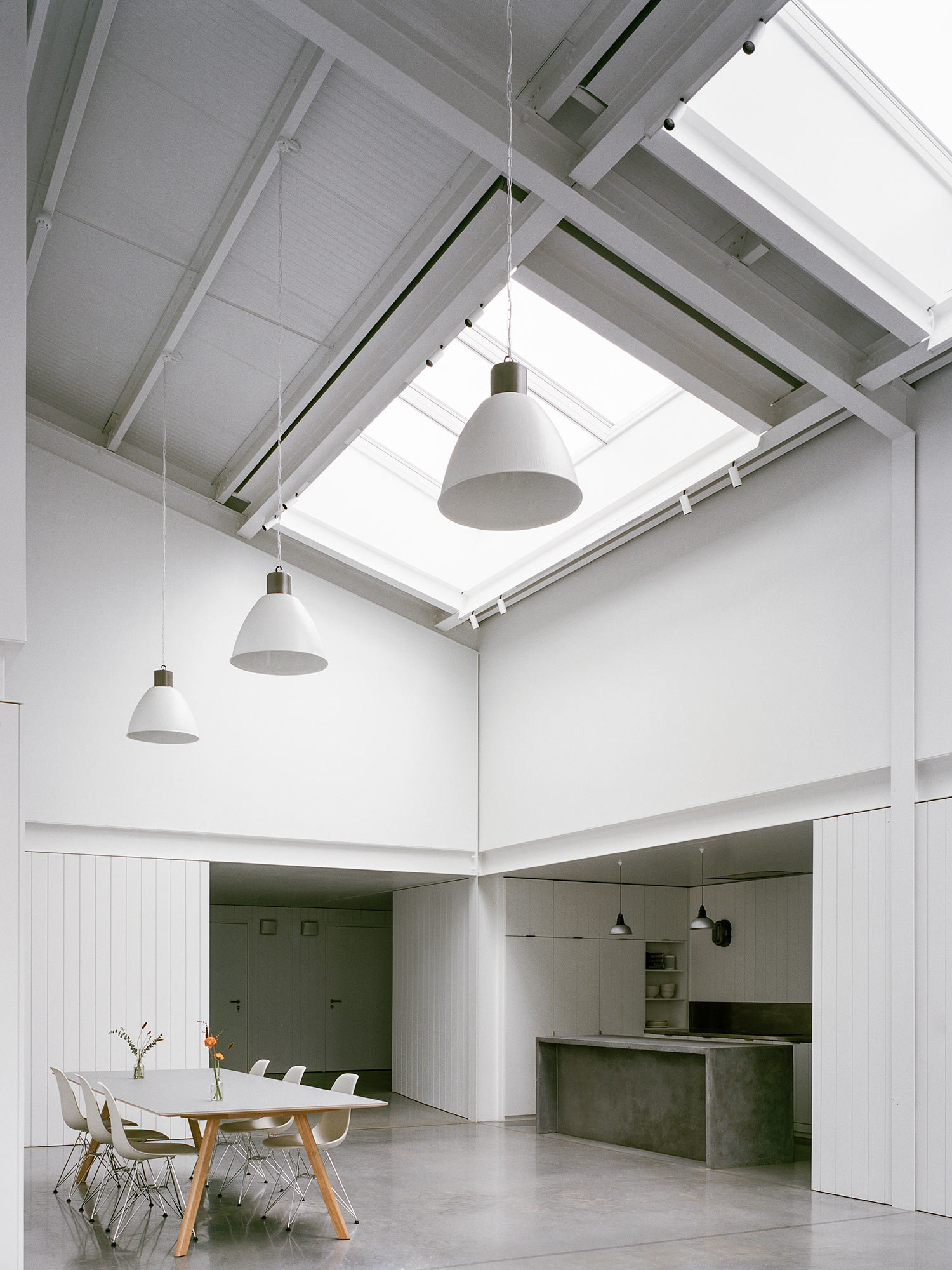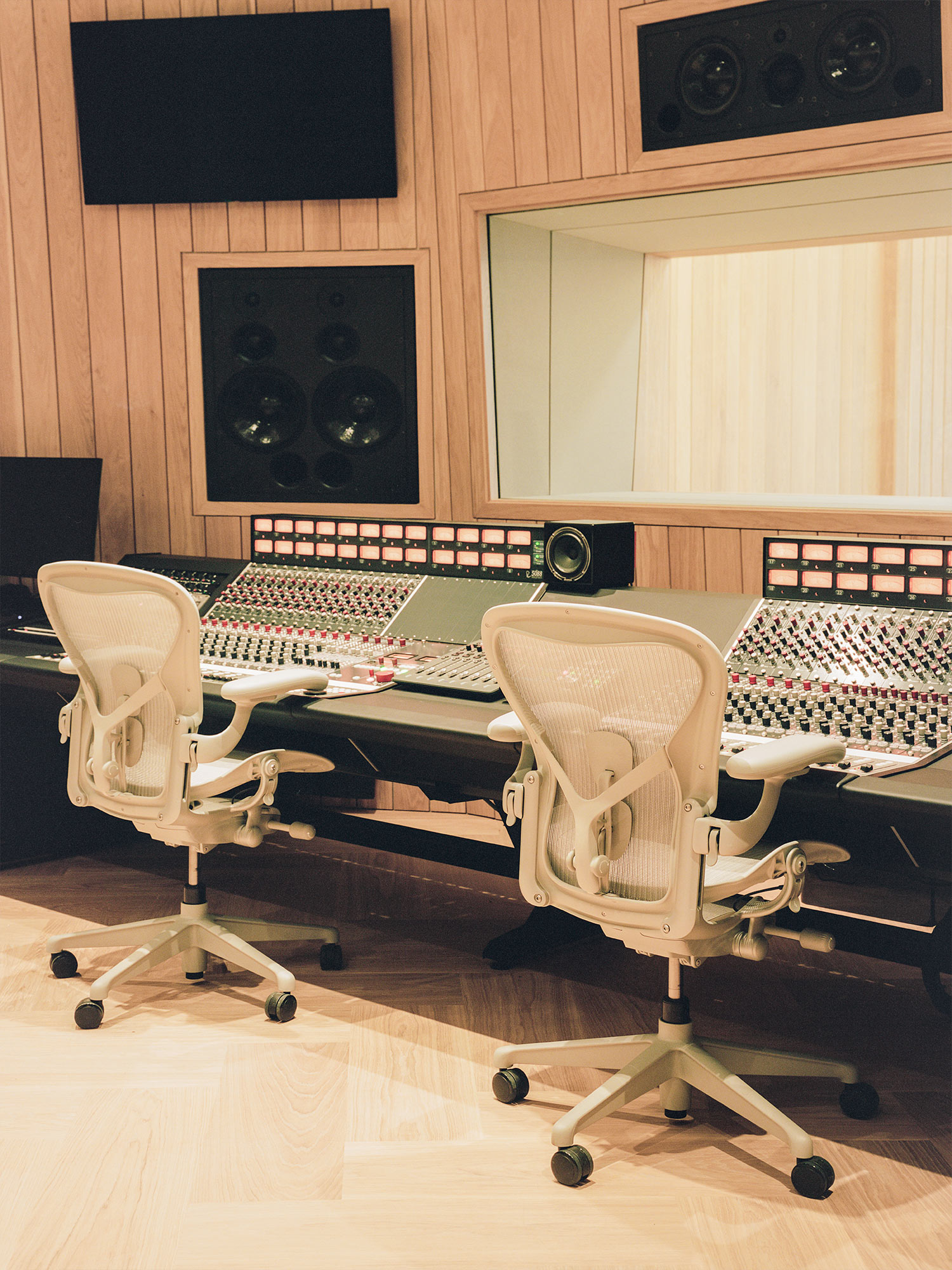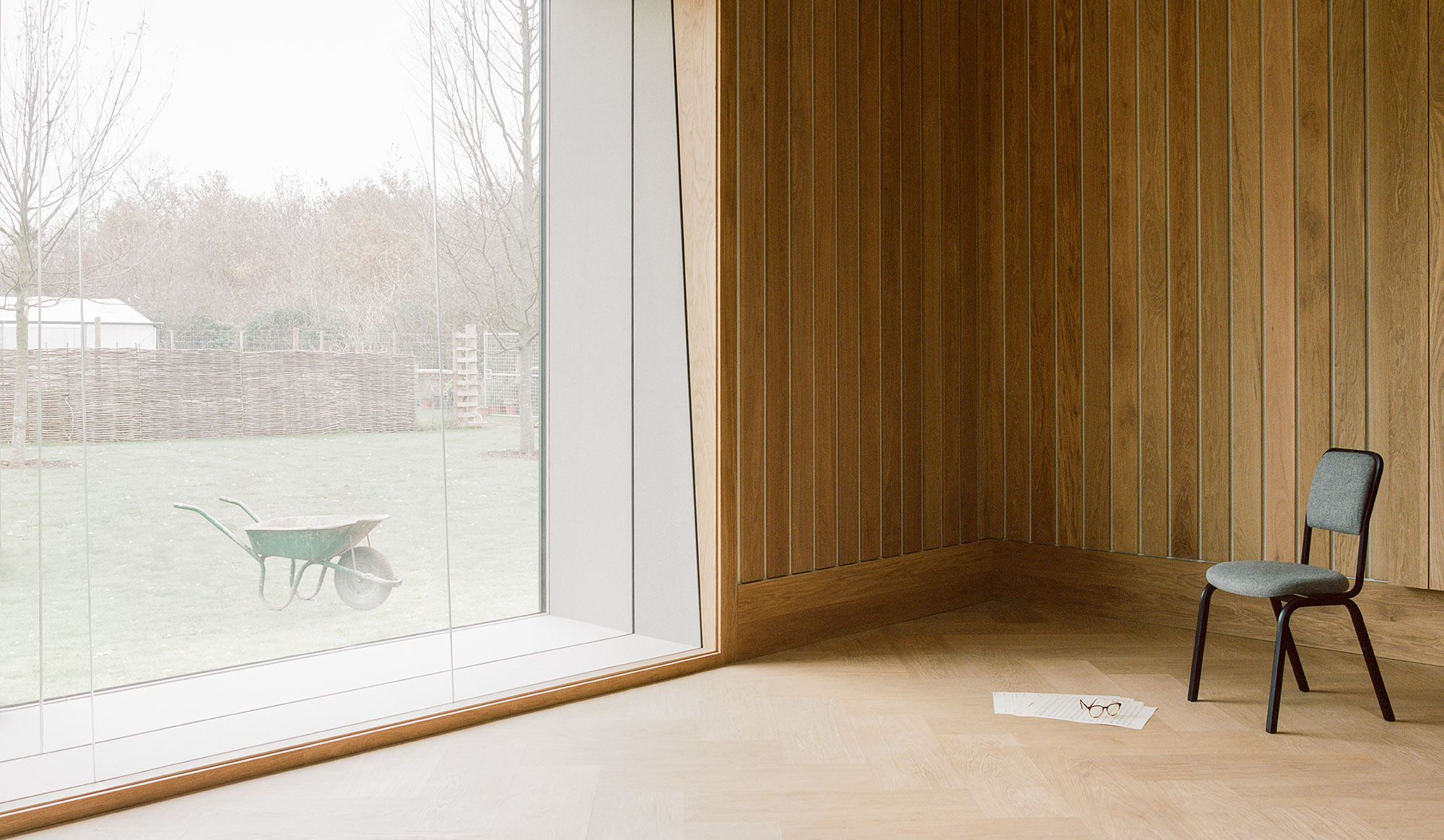Inside Max Richter and Yulia Mahr’s minimalist Oxfordshire creative retreat
By: Ellen Himelfarb
Inside Max Richter and Yulia Mahr’s minimalist Oxfordshire creative retreat

Architecture and sustainability shape everything at Studio Richter Mahr – including its acoustic thumbprint
Words by Betty Wood
Photography by Lorenzo Zandri
‘As young artists, just starting out, without any resources, we often hungered for a space that could give us the time needed to explore creative ideas deeply and meaningfully,’ says award-winning composer Max Richter.
That long-harboured aspiration has finally become a reality in the quiet Oxfordshire countryside. He and BAFTA-winning film-maker and visual artist Yulia Mahr have opened Studio Richter Mahr. The ‘slow retreat’ allows the natural rhythms of rural living and curiosity to guide creativity, giving space and time to experimentation for visual artists, filmmakers and musicians; a radical departure from the high-pace, time-pressured recording studio model.
Richter and Mahr first hit upon the idea for the creative hub over 20 years ago, but finding the perfect location was always a conundrum. They wanted a haven within commuting distance of London (‘but far enough away to feel out of its breathless grasp’ says Richter) – a tough ask, made harder by the pandemic.
After five years of searching, the couple stumbled upon a disused alpaca farm on the edge of a 31-acre woodland in Oxfordshire, where they could finally bring their plan into being.
‘Having spent twenty years thinking about this project, we knew how we wanted every aspect of the studio,’ says Mahr. ‘So we were involved in every detail of the planning and construction. Our brief was very detailed and specific. We started by assembling hundreds of reference images and a wish list of facilities, including my writing studio.
Richter and Mahr enlisted architectural designers Charlie Luxton and James Renfrew to manifest their vision.
‘So many recording studios are hostile environments,’ says the couple who cite poor air circulation and harsh artificial lighting as norms. ‘We wanted something different, a space that invites creativity.’
Luxton and Renfrew (working with construction firm Midland) adapted as much of the pre-existing tractor shed as possible and installed cutting-edge solar panels and heat pumps to power the complex, achieving its carbon-negative standard. Battling through delays and pressures from Brexit and the pandemic, Studio Richter Mahr was completed in an astonishing two years.

An in-house cafe acts as a de facto heart of the retreat, supplied with fresh produce from the organic kitchen gardens on the grounds. (‘We try to all eat together at lunchtime, so all of these elements foster a sense of connection to the bigger natural rhythms and well-being. It’s about taking time and space,’ says Mahr.)
For the studio and mix rooms, a second design team – comprising Level Acoustic Design’s Chris Walls and in-house architect Eleni Papadopoulou and Studio Creations – stepped up to the plate. They crafted what is, in essence, a building within the building, located on a floating concrete floor.

“On a sonic level, the buildings where we perform almost become another instrument in the ensemble.”
- Max Richter
Often recording studios use their tech gear as the aesthetic focus, but Richter and Mahr have taken a radically different route. ‘We’ve done everything possible to hide the technology,’ they say. ‘A minimal aesthetic was always the goal – it’s the way the building can support the work going on in it, rather than the other way around.’
Interiors use lots of wood to connect the complex to its wider setting. But it’s also central to the sound of the studio.
‘We have a huge array of analogue equipment here – our respective practices are rooted in the analogue – [because] the rhythms of analogue are much more in keeping with the nature of our projects.’
‘On a sonic level, the buildings where we perform almost become another instrument in the ensemble,’ explains Richter. ‘Each site has its own particular reverberation and frequency fingerprint. I’ve always been drawn to the idealism behind modernist design.’
Of course, architecture has long played a significant role in the couple’s personal and professional life: over 20 years, Richter and Mahr have created immersive audio-visual projects in some of the world's most extraordinary modernist buildings, including the Barbican, Sydney Opera House and brutalist behemoth Kraftwerk in Berlin.

Though smaller in scale, SRM is part of a tradition of creativity pioneered by The Bauhaus and contemporary educational spaces such as the Banff Center or Black Mountain College – incubating creativity amid convivial settings and offering that most precious of all commodities, time.
‘There is no clock to watch when we are recording,’ concludes Mahr. ‘This makes for a more organic creative process and changes the workflow fundamentally, allowing a more exploratory approach. The impact on our work has been profound already.’
Now Richter and Mahr are throwing open the doors of SRM to other artists, inviting them to revel in its quiet creative energy. It is a commercial space for hire, but ‘it pays it forward’ by offering free space for emerging artists and those serendipitous conversations over a freshly prepared meal conducive to creativity. More studios, an on-site creche, composer labs and artist’s residencies are also on the horizon.